As the growing season begins to fade, savvy gardeners are planning to extend the yielding period with fall vegetable garden.
To be a busy grower throughout the year, you must plan a diversified garden that habitat variety of plants.
While most veggies prefer warmer climatic conditions, there are a bunch of vegetable plants that can thrive in cooler temperatures with shorter days.
You can include kale, cabbage, parsley, beets, spinach, garlic, leeks, parsleys and collard greens to your fall vegetable garden.
Not just the list, in this article you’ll learn growing requirements of these veggies. So, you can extend your growing season with diversified veggie garden.
Why Fall is the Best Time to Plant?
Fall offers the ideal temperature conditions for planting, avoiding the scorching heat of summer and the harsh cold of winter. The moderate daytime temperatures reduce stress on newly planted trees, shrubs, and perennials, allowing them to establish without the shock of extreme weather.
The cooler nighttime temperatures in fall are particularly beneficial for root development, as plants can focus their energy on establishing strong root systems rather than battling heat stress. Meanwhile, the soil retains warmth from summer, creating optimal conditions for root growth that continues well into late fall.
Fall planting supports root growth as plants prepare for dormancy, aided by cooler temperatures, natural rainfall, and fewer pests. This creates ideal conditions for strong establishment before spring’s growing season begins.
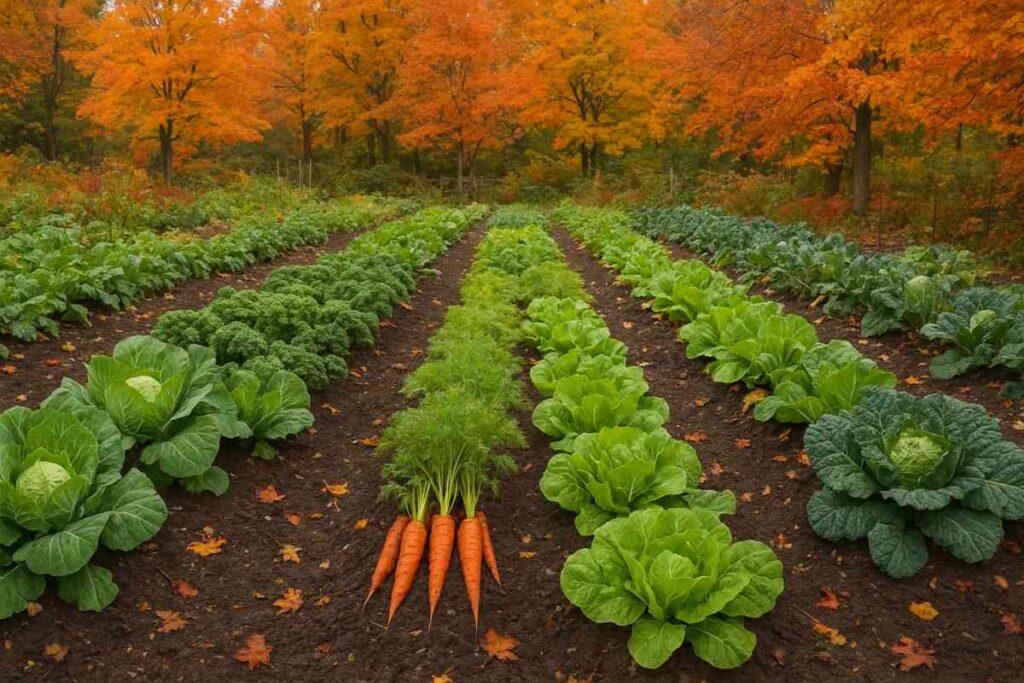
19 Vegetable Plants to Grow in Fall
Fall vegetable gardening offers superior growing conditions as cooler temperatures reduce plant stress, prevent bolting, and create more comfortable working conditions.
Below mentioned are the list of veggies that you can grow in the fall.
1. Spinach

Spinach thrives in cool temperatures between 45-75°F, with optimal growing conditions occurring when daytime temperatures stay in the 50-60°F range.
The plant performs exceptionally well in fall because it can tolerate temperatures as low as 15-20°F, and young seedlings actually become sweeter after light frost exposure.
How to plant:
Plant spinach seeds 6-8 weeks before the first fall frost when soil temperatures are between 45-68°F for optimal germination.
Fall’s naturally cool soil and air temperatures prevent the bolting that occurs in summer heat, allowing plants to focus energy on producing tender, flavorful leaves rather than going to seed.
Fall spinach requires minimal intervention as the season’s reduced daylight hours and consistent moisture from autumn rains create ideal growing conditions without the stress of summer heat.
Also Read: 18 Vegetables to Plant in September
2. Kale

Kale is one of the hardiest greens for fall planting, thriving even as the temperatures drop. With curly, lacinato, and Siberian varieties, kale offers sturdy leaves packed with vitamins A, C, and K, making it a nutritious addition to autumn meals.
Kale seeds can be sown directly into well-drained garden soil or raised beds in late summer or early fall. Simply scatter the seeds and lightly cover them, as they germinate quickly in cooler conditions.
Harvest kale by snipping the outer leaves as they reach full size, leaving the central growth to produce more foliage.
You can also cut the entire plant for a larger harvest, but regular picking encourages continuous regrowth, ensuring a steady supply throughout the season.
3. Radishes

Radishes are one of the fastest-growing vegetables you can plant in your fall garden, making them perfect for impatient gardeners or quick succession plantings.
These crisp root vegetables actually prefer the cooler temperatures of fall, typically maturing in just 20-30 days from seed to harvest. Unlike many vegetables that struggle in heat, radishes grown in summer often become woody, overly spicy, and develop a tough texture.
Fall’s naturally cool soil and consistent moisture create ideal conditions for radishes to develop their characteristic crisp bite and mild peppery flavor.
The cooler temperatures slow their growth just enough to prevent the splitting and bitter taste that occurs when they mature too quickly in warm weather.
You can sow radish seeds directly into the soil every two weeks for a continuous harvest throughout the fall season, and many varieties actually become sweeter after experiencing a light frost.
4. Lettuce

Lettuce is a cool-season crop that thrives when temperatures stay between 45-65 degrees Fahrenheit, making fall the ideal growing season for crisp, tender leaves.
While lettuce can tolerate light frosts down to about 28 degrees, it will bolt and turn bitter when temperatures consistently exceed 70 degrees, which is why summer lettuce growing can be challenging.
Lettuce is one of the fastest-growing vegetables in your fall garden, with most varieties ready to harvest in just 30-60 days from seed.
You can direct sow lettuce seeds in your raised beds or start them indoors 2-3 weeks before transplanting, allowing for multiple successive plantings throughout the fall season.
Check this: 13 Easy Vegetables to Grow in Summer
5. Arugula

Arugula flourishes in fall’s cool, mild weather, thriving best when temperatures range from 45-65 degrees Fahrenheit. It germinates quickly and is ready to harvest within 30-40 days.
For a continuous supply, sow seeds every 2-3 weeks directly into raised beds; harvest leaves when young for the best peppery flavor.
6. Broccoli
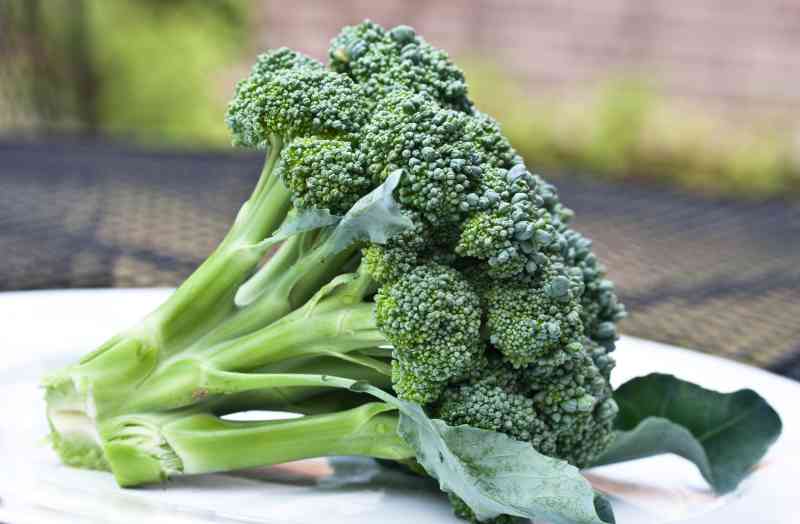
Broccoli is a classic cool-season crop, preferring steady temperatures between 55-70 degrees Fahrenheit. It is sensitive to heat and will bolt if grown in summer.
Start broccoli seeds indoors 6-8 weeks before your fall planting date or transplant seedlings out as temperatures begin to cool.
Expect harvests in 60-100 days, with heads forming best after a few light frosts for improved tenderness and sweetness.
7. Cauliflower

Cauliflower requires stable fall temperatures between 50-70 degrees Fahrenheit and benefits greatly from the gentle cooling as autumn progresses.
It grows slowly, often taking 70-130 days from seed to harvest, and is best started indoors then set in raised beds.
Heads mature beautifully in cool conditions, gaining a sweeter flavor after frost. Shield developing curds from sunlight by tying up the leaves.
8. Cabbage

Cabbage is hardy and frost-tolerant, thriving when grown in temperatures from 45-75 degrees Fahrenheit.
It can withstand frosts as low as 20 degrees and matures slowly, typically over 80-180 days. Start seeds indoors 4-6 weeks before planting in raised beds to ensure strong development and healthy, tight heads.
9. Brussels Sprouts
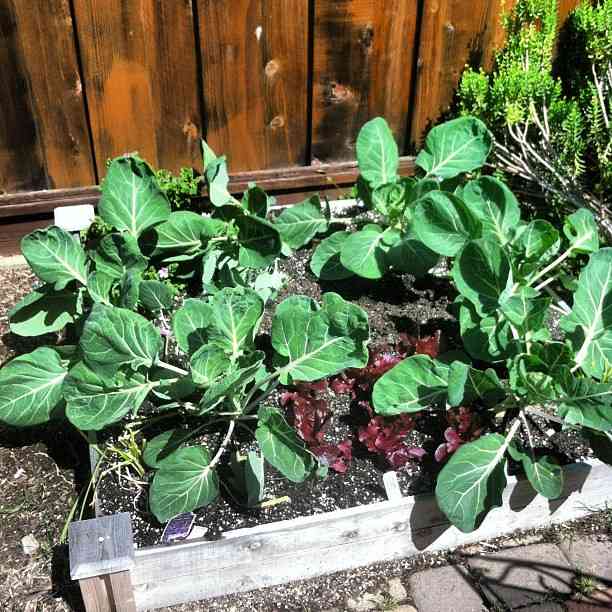
Brussels sprouts are among the most cold-tolerant vegetables, flavor improving dramatically after exposure to frost. This crop requires a long growing season, often 90-180 days, and prefers temperatures between 45-75F.
Plant seedlings in raised beds by midsummer for a late fall harvest; pick sprouts from the base of the stalk upwards as they reach walnut size.
10. Turnips

This dual-purpose root vegetable excels in cool weather, preferring temperatures between 40-75F and can tolerate frost down to 28 degrees. Both the peppery greens and sweet roots are edible, with the crop maturing quickly in just 35-60 days from seed.
Direct sow in raised beds during late summer for a fall harvest, enjoying both tender leaves and crisp roots.
11. Beets

These colorful root crops thrive in cool conditions with temperatures ranging from 50-70F and actually develop better flavor after experiencing light frost.
The entire plant is edible, from the jewel-toned roots to the nutritious greens. Expect harvests in 50-70 days from seed, and direct sow in raised beds with consistent moisture for the sweetest, most tender results.
12. Carrots

Root development peaks during fall’s cool weather, with optimal growing temperatures between 60-70F during the day and cooler nights.
Cold weather actually concentrates sugars in the roots, making fall-grown carrots notably sweeter than summer varieties.
These slow growers need 70-80 days to mature, so plant seeds in late summer for autumn harvests that can extend well into winter.
13. Swiss Chard

This hardy leafy green tolerates a wide range of cool temperatures from 50-70 degrees Fahrenheit and can withstand light frosts down to 28 degrees.
The colorful stems and nutritious leaves provide continuous harvests for 60-90 days once established.
Start from seed in raised beds and harvest outer leaves regularly, allowing the center to keep producing throughout the fall season.
14. Collard Greens

These robust leafy vegetables actually prefer cooler weather, thriving in temperatures between 45-75F and becoming sweeter after frost exposure.
The large, flat leaves are packed with nutrients and ready to harvest in 60-85 days from seed.
Direct sow or transplant seedlings into raised beds, harvesting individual leaves as needed for continuous production.
Also Read: 30 Best Vegetables to Grow in Buckets
15. Mustard Greens
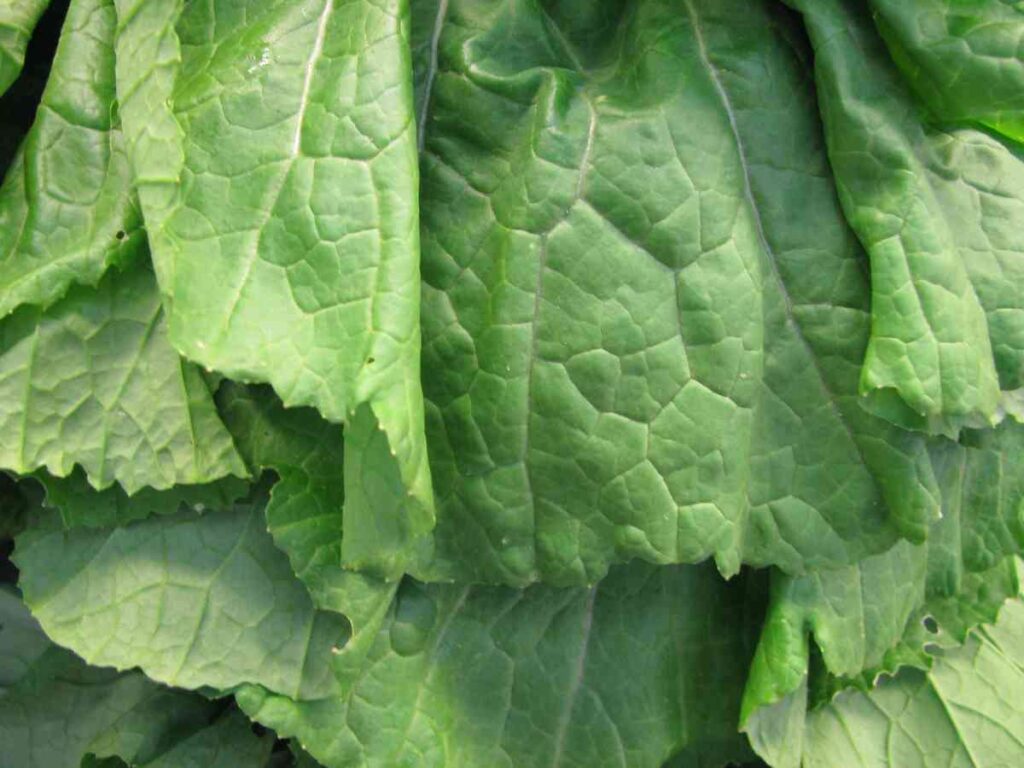
Fast-growing and cold-tolerant, these spicy greens flourish in temperatures between 45-75F and can handle light frosts.
The peppery leaves are ready to harvest in just 30-45 days, making them perfect for quick succession plantings.
Sow seeds directly in raised beds and harvest young leaves for milder flavor or mature leaves for more intense spiciness.
16. Garlic

Fall planting is essential for this long-season crop, which requires a cold period to form proper bulbs.
Plant cloves when soil temperatures drop below 60F, typically 4-6 weeks before hard frost.
The bulbs develop slowly over winter and are ready for harvest the following summer, making this a true investment crop for patient gardeners.
17. Onions

Cool-season varieties planted in fall establish strong root systems before winter dormancy.
These hardy bulbs prefer temperatures between 55-75F and can tolerate frost once established.
Plant onion sets or seedlings in raised beds, allowing 90-120 days for full bulb development that continues through winter into the following growing season.
18. Peas
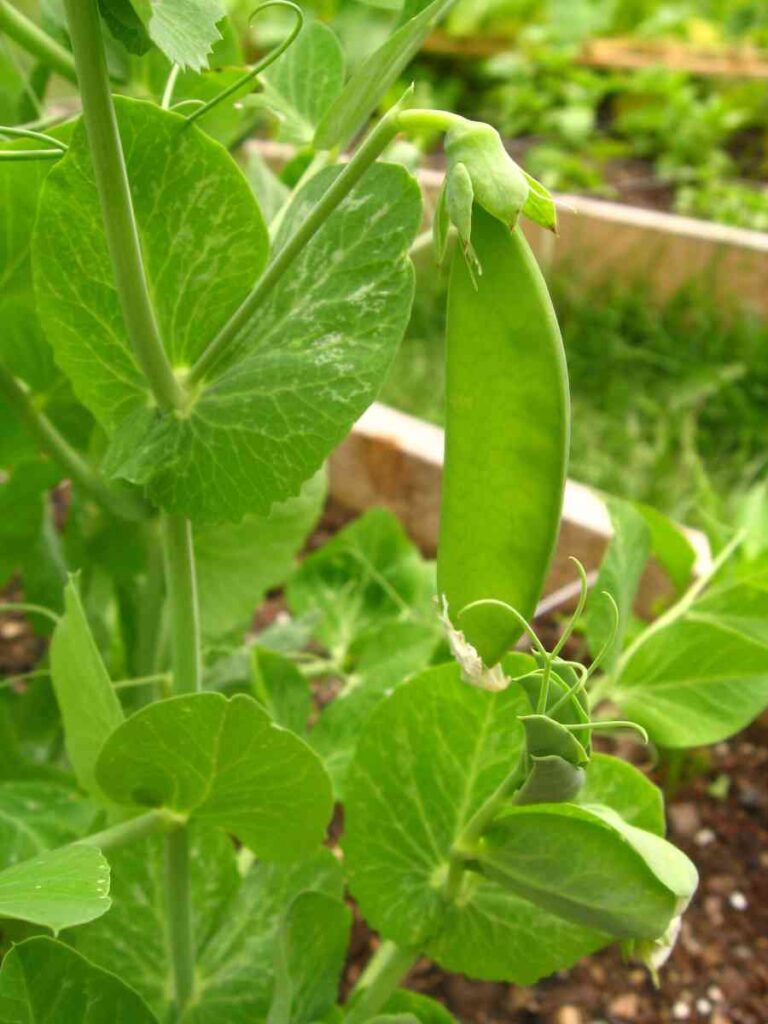
Cool, moist conditions of fall create ideal growing conditions for this nitrogen-fixing legume, which prefers temperatures between 55-70F.
The pods and shoots can tolerate light frost, and the crop matures quickly in 50-70 days from seed.
Direct sow in raised beds with trellising support, enjoying both the pods and tender shoots throughout the harvest period.
19. Kohlrabi

This unusual brassica forms swollen stems above ground and thrives in cool temperatures ranging from 45-75F.
The crisp, mild-flavored bulbs mature in 45-60 days and actually improve in taste after light frost exposure.
Direct sow seeds in raised beds, harvesting when bulbs reach tennis ball size for the best texture and flavor.
Also Read: How to Dry Fresh Basil Naturally?
Important Tips for Fall Vegetable Garden
- Count backwards from your first frost date and add 2-3 weeks for the “fall factor” since plants grow slower in shorter, cooler days. Start planning in mid-summer (July) and begin planting 6-8 weeks before expected frost.
- Start seeds indoors 4-6 weeks before transplanting to give plants a strong head start before winter arrives.
- Cool down hot summer soil by shading for a few days and moistening well before planting seeds. Clear out old crops and weeds immediately to prevent insect and disease buildup.
- Add generous amounts of compost to restore nutrients that summer plants have depleted. Apply mulch to regulate soil temperature and moisture for optimal growing conditions.
- Choose shorter-season varieties or those specifically rated for late-season growing to ensure harvest before frost. Focus on cool-season crops: leafy greens (spinach, lettuce, kale), root vegetables (carrots, radishes, turnips), and brassicas (broccoli, Brussels sprouts).
- Select fast-growing options like turnips, mustard greens, and arugula that can mature in 40-60 days even from late summer plantings.
- Plant root and fruit crops in areas receiving the most sunlight (at least 6 hours direct sun). Use leafy greens in slightly shadier areas as they can tolerate less sunlight than other vegetables.
- Orient rows north-south to maximize sunlight distribution throughout the day.
- Water deeply but less frequently than in summer heat, only as needed to prevent drought stress. Separate heavy-watering crops from those requiring less water like onions and root crops that need to dry for proper storage.
- Have floating row covers and hoops ready before cold weather arrives to protect crops from unexpected early frosts. Use cold frames or mini greenhouses to extend the growing season if you have the time and resources.
- Consider containers for fall crops if garden space is limited – they’re easier to manage in cooler weather since soil doesn’t dry out as quickly. Use grow bags for root vegetables like potatoes to make harvesting simple.
- Plant leafy greens under taller crops like broccoli to maximize space and provide natural shade. Pair root vegetables with leafy greens to optimize garden productivity and space usage.
Conclusion
Fall vegetable gardening extends your harvest season with cool-season crops like leafy greens, root vegetables, and brassicas.
Success requires proper timing, soil preparation, and frost protection, offering fresh produce when store prices peak and pest pressure decreases significantly.

Khaja Moinuddin, a computer science graduate, finds joy in gardening and homesteading. Join him on this blog as he shares his experiences in homesteading, gardening, and composting